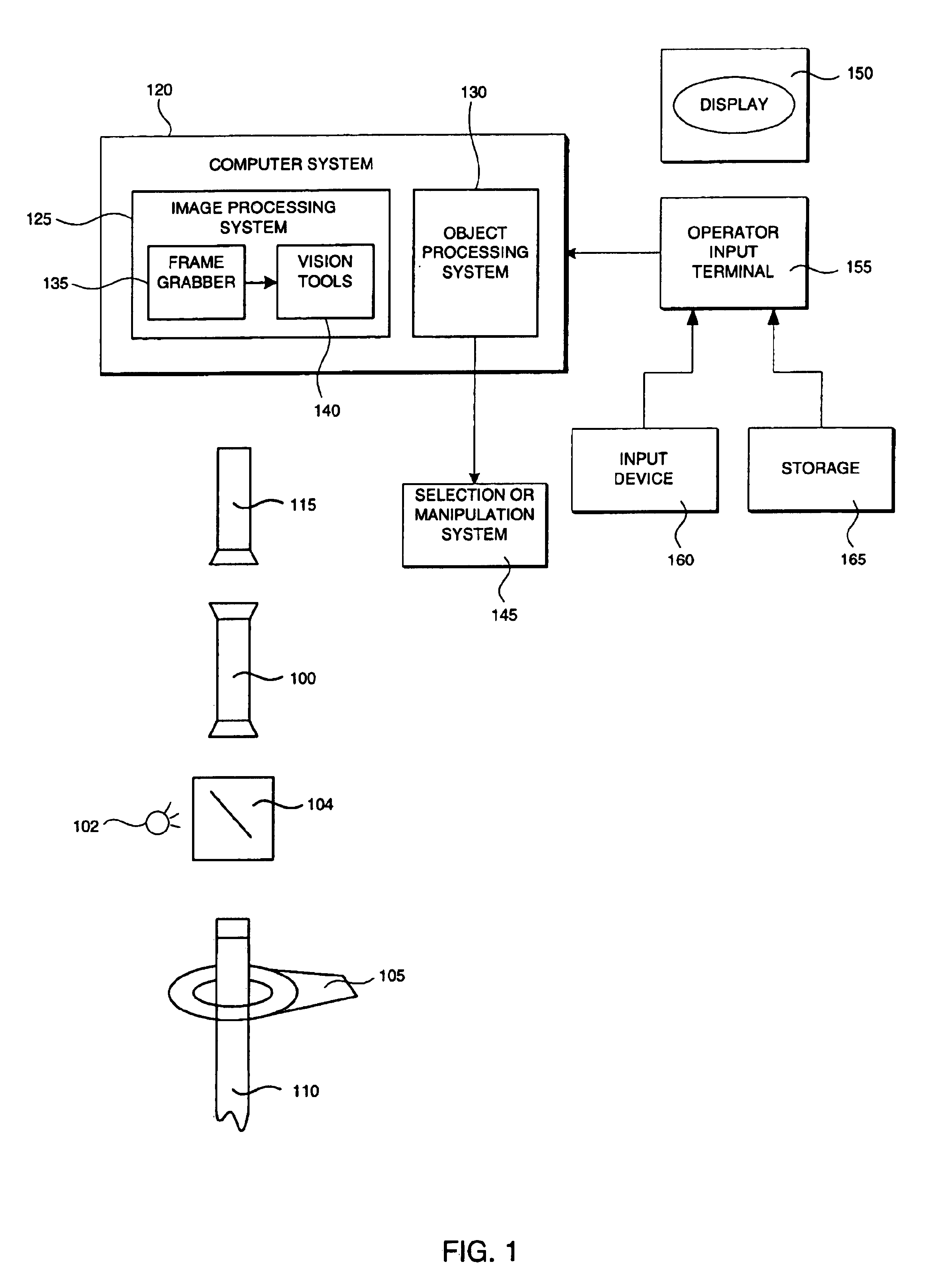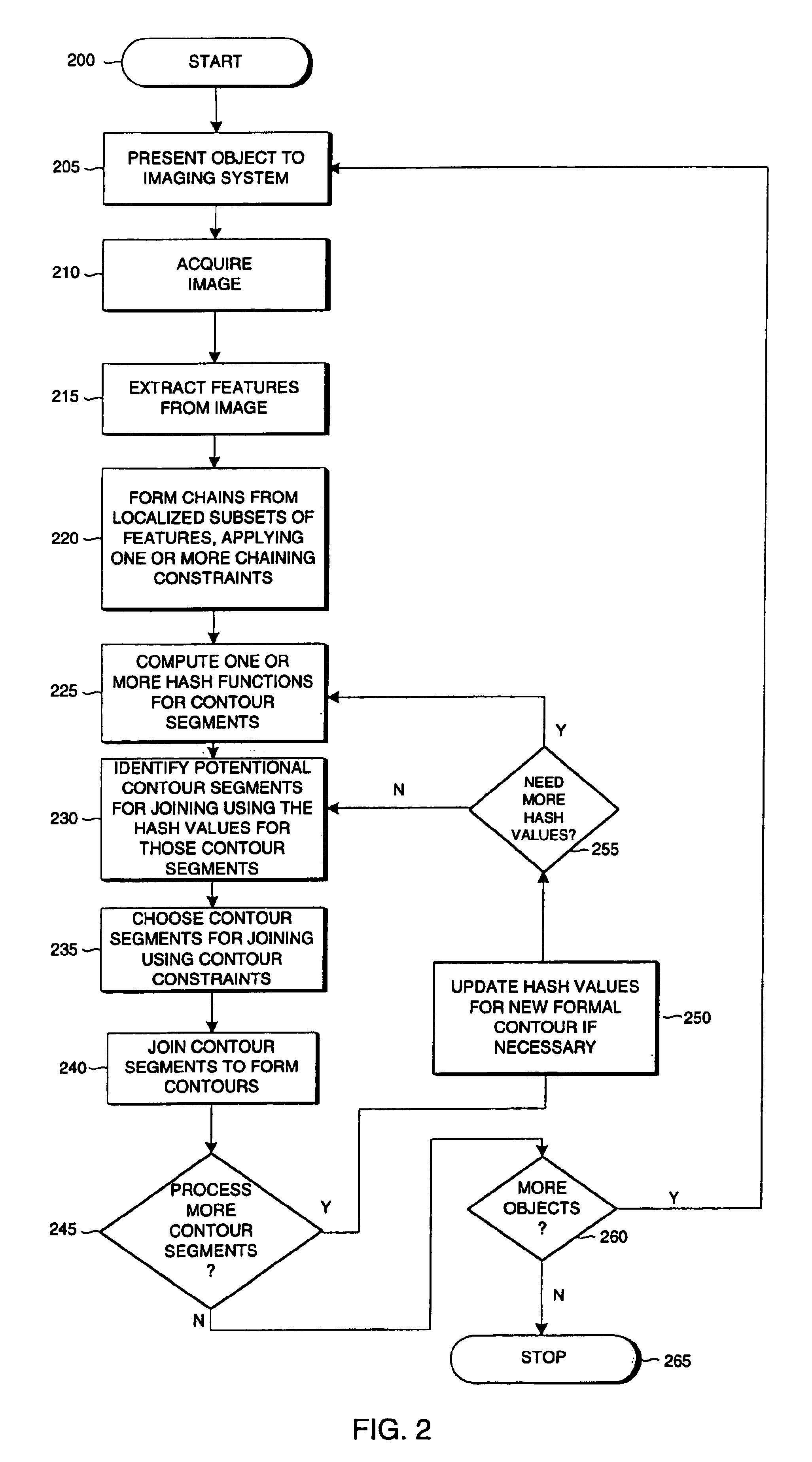Due to the vast number of possible surface qualities and textures, machine vision applications that are useful for inspecting certain surface types may not be well suited for inspecting certain different surface types.
This process can cause defects, which if undetected can block the proper transmission of light through a fiber.
Although manual inspection methods are expensive, the alternative, i.e., machine
vision inspection of
optical fiber end surfaces, has proven difficult to implement.
Optical fiber end surface inspection has presented many obstacles to the application of automated inspection techniques using machine vision systems.
While standard machine vision methods are adequate for many
industrial machine vision applications, highly specialized operations, like inspecting polished fiber ends, often require specialized vision methods.
The lines often have very
low contrast and are speckled with
noise and texture artifacts and therefore do not always appear continuous to common
edge detection techniques that use local
metrics or small kernel sizes.
Such contours that appear discontinuous in an image are particularly difficult for machine vision systems to identify.
This is not always easy to do given that there may be many confusing features in the image.
Another shortcoming of binary techniques is that they only provide whole pixel accuracy.
Also, scratches can have
low contrast thus making it very difficult to find a
usable threshold.
For the inspection of fiber end surfaces, it is very difficult to generate models of defects such as scratches due to their variability.
This type of exhaustive technique is impractical since it would not run in a reasonable amount of time.
While PatMax has some flexibility in performing a rotation and scale invariant search, it is not optimal for finding scratches on fiber ends.
Geometric pattern matching techniques will have difficulty localizing line models along lines in an image.
Scratches may be of any length and finding lines of varying lengths with a
single line model of a
fixed length that can be scaled has problems.
The many good matches can make the tool take a long time to executed and when the
line model is allowed to change scale, the match calculation can become numerically unstable.
PatMax is also susceptible to the problems with lower-level edge detectors as described next.
Also, both
template matching and
geometric pattern matching techniques assume that the object to be found will have a consistent appearance, and this is usually not the case for scratches in a fiber end face.
Scratches can be particularly difficult to detect because they usually have
low contrast with respect to a fiber end surface.
These types of lighting and viewing angle changes can enhance the quality of the scratch contrast but still will not be enough to make simple vision techniques work.
Projections are also very susceptible to
confusion by bright spots.
Also, the small-scale irregularities of the scratches will generate many false edges and miss many valid edges such that the subsequent
processing steps, such as chaining, have too many features to consider, thus making such
processing run slowly and produce erroneous results.
Often the problem of detecting and tracing scratches becomes a problem of grouping features such as edge features to form higher-level contours.
The line Hough has additional limitations including the generation of large numbers of candidates that must each be separately verified.
Arbitrary curves or contours, such as some fiber end scratches, however, cannot be found by any implementation of the
Hough transform.
Furthermore, the quantization of
Hough space into accumulator cells can introduce
significant error in the reported location of candidate lines or curves.
Hough transforms also typically rely on lower level
edge detection such as Sobel or Robert transforms and therefore suffer all of the limitations of those lower level operations.
Such small gaps occur quite frequently in images and are especially problematic in low contrast defects such as scratches in
optical fiber end surfaces.
The method according to the Dar patent disadvantageously requires extensive pre-
processing to isolate regions of suspected scratches in which to apply the
Hough transform.
More significantly, the method according to the Dar patent suffers the same disadvantages of the general
Hough transform in that it connects widely separated pixels that may not be part of a common contour.
The method disclosed by the Palmquist patent disadvantageously requires the acquisition of an optimal focus image and auxillary images behind and in front of the optimal focal positions.
In addition, fiber scratches that are irregular, low in contrast, or formed by a series of dots that are not necessarily connected, do not form continuous connected edges and will not be detected by this method.
In fact, edge detectors may not detect a string of dots at all.
 Login to View More
Login to View More  Login to View More
Login to View More 


